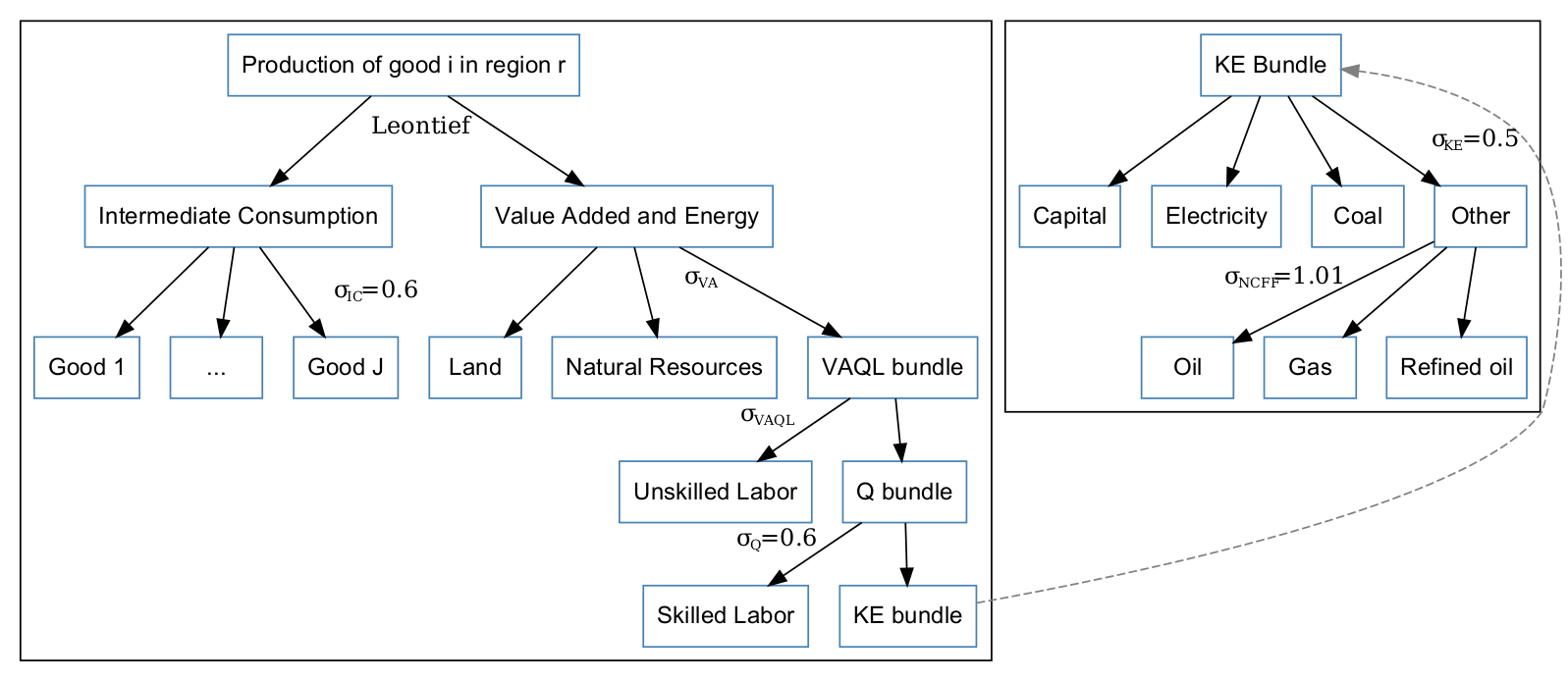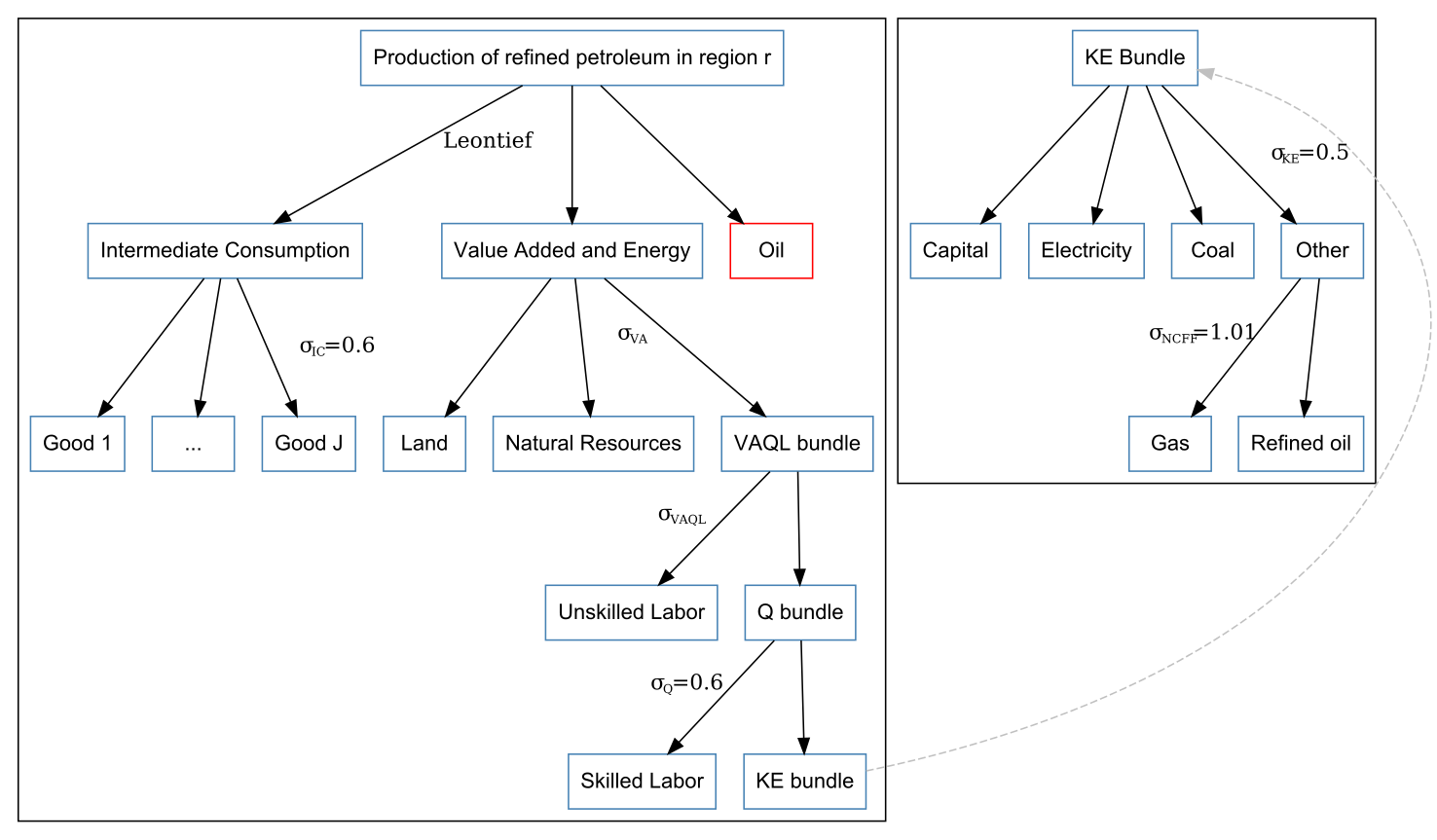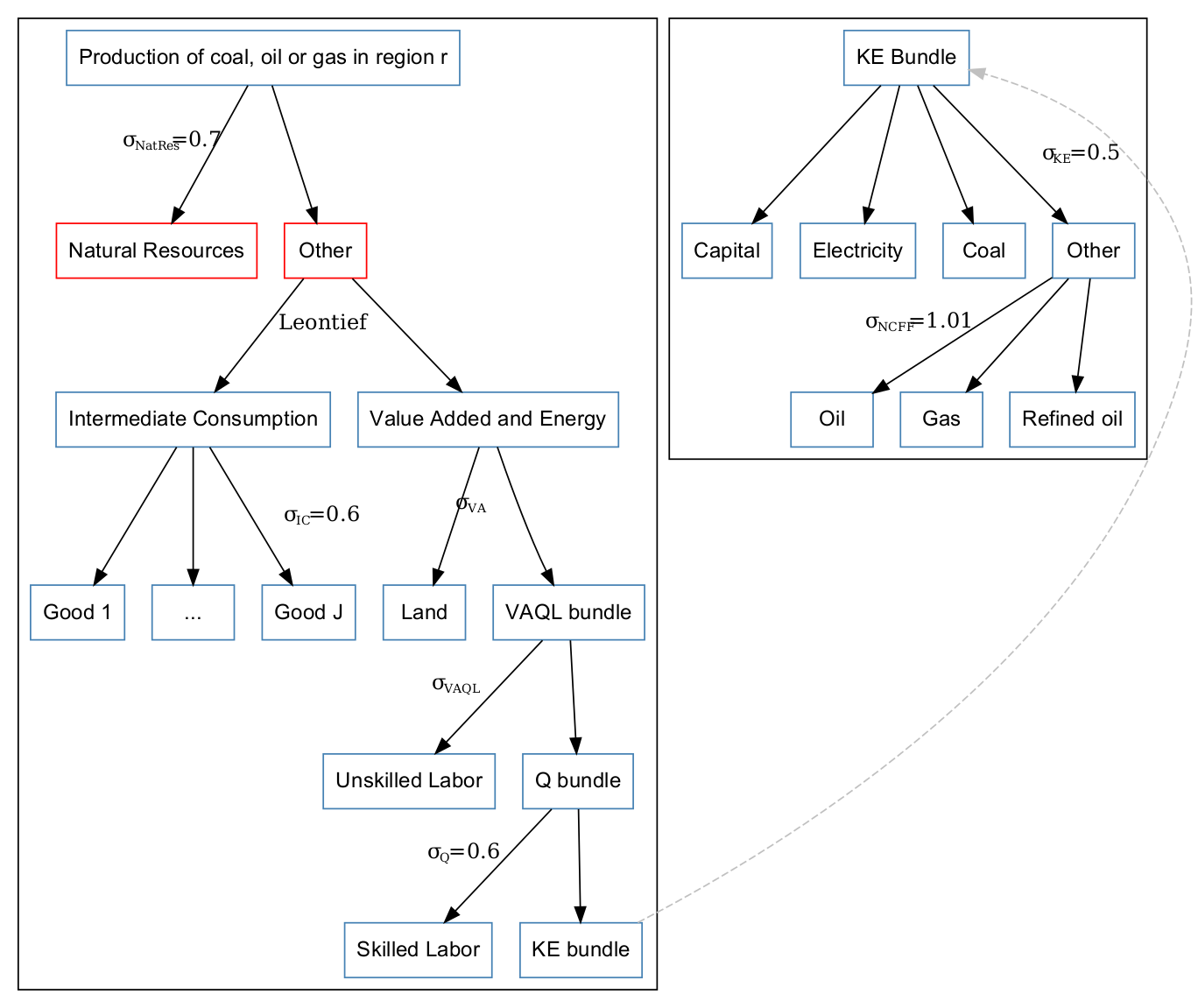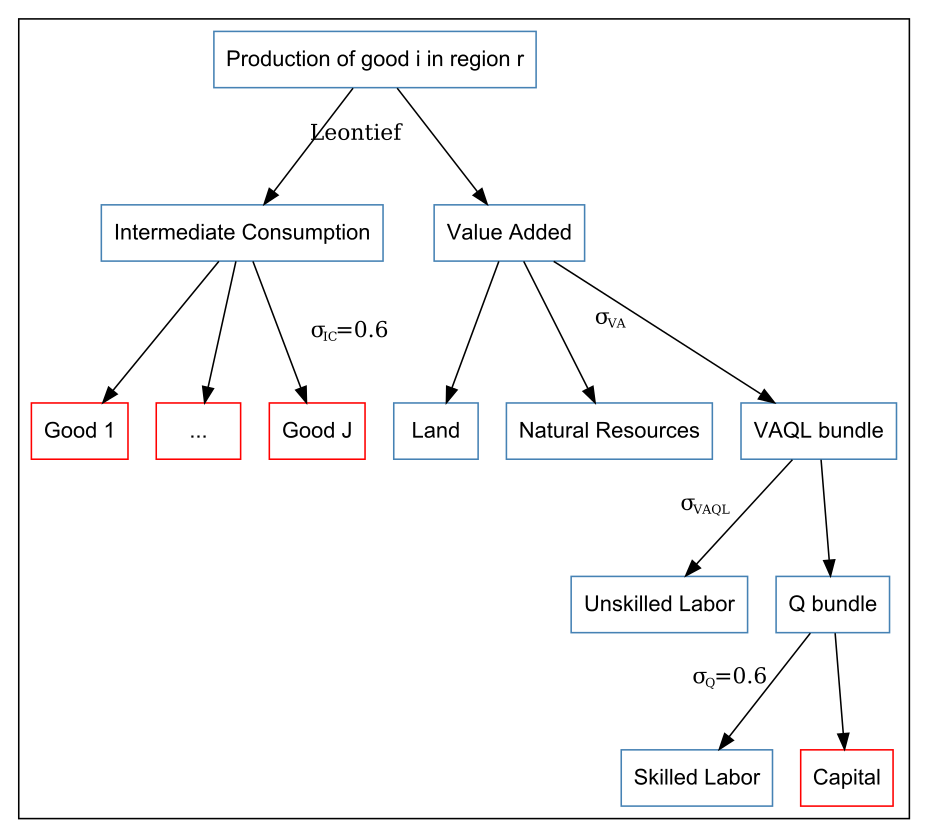Supply side (MIRAGE-e)
Production factors
The production makes use of five factors: capital, skilled labor, unskilled labor, land, and natural resources. Factor endowments are assumed to be fully employed.
Factor supply
Growth rates of factor supply are:
- Natural resources:
- Constant for sectors other than primary fossil production
- Calibrated in the baseline for primary fossil energy (coal, oil, gas)
- Labor: Exogenous growth based on EconMap, differentiated by skill level
- Land: Endogenous to the model, based on an isoelastic function of the real return to land
- Capital: Endogenous to the model, determined by domestic savings (exogenous share of revenue) and current account (exogenous share of world GDP), both projected by EconMap.
Factor mobility
Capital, natural resources
Installed capital and natural resources are sector-specific, so their rates of return may vary across sectors and regions.
Labor
Labor is region-specific but perfectly mobile between sectors (agricultural vs. non-agricultural segmentation to be updated).
Land
This global factor is distributed across productions based on the assumption that it is a Constant Elasticity of Transformation (CET) function of land demands; this assumption introduces imperfect mobility of land across uses.
Substitutions in the production chain

Standard case (energy in value-added)
The standard production function in MIRAGE-e requires a particular aggregation: five energy sectors have to be singled out (coa, oil, gas+gdt, ely). Then, production functions are as follows.
General case
In a standard fashion, perfect complementarity is assumed between value-added and overall intermediate consumption (Leontief function). The sectoral composition of the intermediate consumption aggregate stems from a CES function, with the same elasticity as in the corresponding LES-CES for final consumption.
Intermediate demand for energy is, however, not included in the intermediate consumption bundle but substitutes mainly with capital, as it is standard in energy-oriented CGE models.
Then, for each product, the geographical origin of the product is based on the same nesting as for final consumption, meaning that the sector bundles for final and intermediate consumptions share the same structure by origin (see The demand side).
Exceptions
There are two sectors that do not have the standard production function due to their specificities: primary fossil fuels and refined petroleum. In the figures below, nodes highlighted in red denote the differences.


MIRAGE traditional production function
In case the aggregation retained is not fitted to energy in value-added, the production function is reverted to MIRAGE traditional production function where energy goods are treated as other intermediate consumptions. This specification is recommended when no energy-specific issue is at stake.

Elasticities of substitution
| Symbol | Elasticity | Value |
|---|---|---|
| \(\sigma_{IC}\) | Intermediate consumptions | 0.6 |
| \(\sigma_{VA}\) | Land – Natural Resources – VAQL | 1.01 or 0.1 |
| \(\sigma_{VAQL}\) | Unskilled Labor – Q | ESUBVA (GTAP) |
| \(\sigma_{Q}\) | Skilled Labor – KE | 0.6 |
| \(\sigma_{KE}\) | Capital – Electricity – Coal – Other | 0.5 |
| \(\sigma_{NCFF}\) | Oil – Gas – Refined oil | 1.01 |